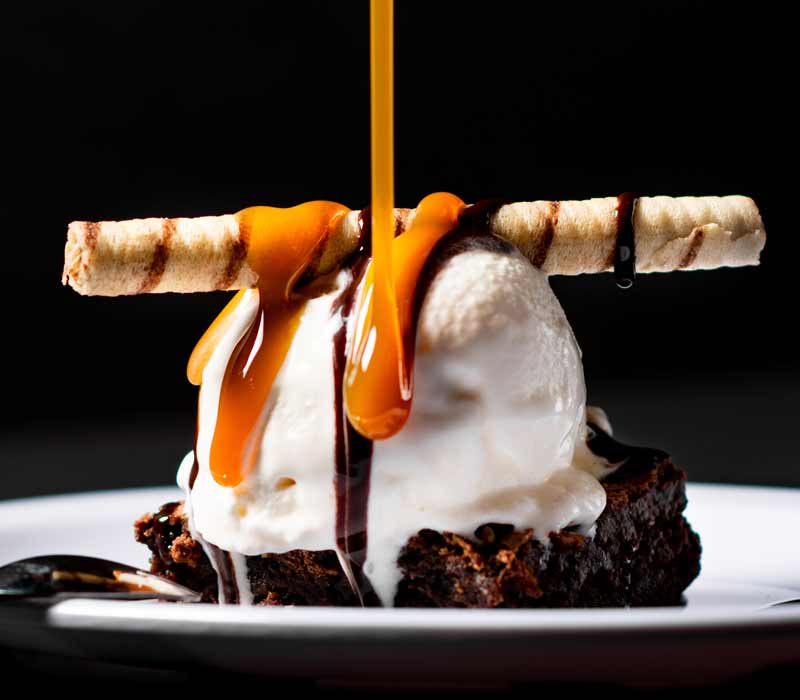The human brain is hard-wired to be motivated by certain key goals that supported the survival and reproduction of our ancestors. One of these key goals is of course food intake.
When our brains accomplish a key goal that is hard wired in us because it is essential to our survival (e.g. food intake), a powerful brain chemical called dopamine is released. After its release, it causes you to become more likely to execute specific behaviors that are essential to your survival, the next time you find yourself in a situation with sensory cues associated with carrying out that specific survival behavior.
These cues include sounds, smell, taste and location. This is a reason as to why you may crave certain foods just at the smell of them or if you are in a location where you usually consume a particular type of food.
Dopamine causes you to become more likely to execute specific behaviors that cause its release, when environmental cues are provided. In this case, it could be the sight and smell of certain foods.
When we consume food, sensors in the mouth and small intestine detect the glucose, fructose, fatty acids, amino acids, starch, sugar, fat, and protein and send a signal to the brain that releases dopamine. And the more concentrated those nutrients are in a food source, the greater the surge in dopamine. These are very concentrated in high calorie, processed food like chips, baked goods and chocolate.
From an evolutionary perspective, the release of dopamine in response to high calorie, highly palatable, sweet and fatty foods, makes sense. When we were hunter gatherers, food was scarce and when we came across calorie dense foods like sugary fruits and honey, the dopamine surge was crucial to our survival as it made us splurge on these foods (overriding our fullness signals) because we didn’t know where our next meal was going to come from. Nowadays, with the easy accessibility of food, this response can lead to weight gain.
Highly processed, high calorie foods such as foods like chips, fries, cake, ice cream, and chocolate, deliver exactly what our brains are instinctively looking for, concentrated starch, sugar, fat, salt, and protein, which is why we crave these foods when we see them, smell them and find ourselves in locations/situations where we are used to consuming them.
So my tip to you:
1. Remove yourself from the sensory cues of high calorie foods, especially when you are hungry (e.g. don’t store junk food in the house or go shopping when hungry).
2. Eat foods that make you feel full, which are not packed with calories. These are foods that are high in protein such as meat, seafood and eggs, as well as foods high in fiber, such as vegetables. These foods take time to digest, require energy to be digested and take up a lot of space in the gut, making you feel fuller for longer, and decreasing your cravings.
Book an appointment with ReMed call 1300 1 REMED or 1300 173 633






